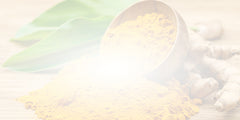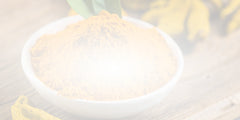
Trying to improve our health usually involves introducing changes to our diet and adding supplements to our regimen. An improved diet can go a long way to improving our health but introducing supplements can take those improvements further. Multiple supplements available for consumption can provide health benefits beyond a simple lifestyle reform.
While these supplements are not miracle cures, they can be just the boost you need to reach the next stage of your bodily health. One of the rising stars in the supplement world is turmeric curcumin, which has seen greater use in modern lifestyles. Turmeric's growth as a supplement is no coincidence, but it has the same issue as any supplement you introduce to your system—the complexity of its use.
Whenever we add a new substance to our diets or health regimen, there is a slight learning curve as we adapt to its benefits, shortcomings, and hazards. While turmeric is relatively lacking in the last one, it does have some traits that make using it a more complicated task than you might expect. Turmeric has a few traits that require a little effort to overcome so you can use it effectively, and understanding those issues often requires a little help. Fortunately, there are experts out there who can provide insight into these traits so you can use turmeric properly.
#1: Combine With Piperine
The key component of turmeric that makes it a viable supplement is the curcumin content. The Curcuma longa root is closely related to ginger and only has the added benefit of curcumin. Curcumin's health benefits are what turned it into such a popular supplement, but curcumin is an imperfect substance with a glaring issue. Curcumin suffers from low bioavailability, so it is difficult for the body to absorb and distribute the substance through your system. This low bioavailability can cripple your efforts to use turmeric curcumin unless you can bolster your body's ability to absorb curcumin.
While you cannot alter your body's absorption rates to such an extent, it is possible to tweak the bioavailability of curcumin so there is more to absorb. This is done by introducing piperine to the curcumin and taking them together. Fortunately, piperine is extremely easy to get ahold of as it is the active ingredient in common black pepper. Research confirms that piperine increases curcumin's absorption rate by 2,000%, making it an overwhelming enhancement.

Using piperine to improve the bioavailability of curcumin is becoming common practice and is less of a tip and more common sense these days. However, using piperine to enhance curcumin's beneficial qualities is not the only way to maximize your experience using curcumin.
#2: Taking Turmeric Via Supplement
The first instinct most people have when they learn of the benefits of certain products or foods is to introduce more of them to their diet. While this can be effective in some instances, it is sometimes better to take advantage of a supplement that maximizes the content of the key ingredients. Similar to how supplements exist to increase your intake of omega-3 fatty acids, which naturally occur in fish, there are supplements to do the same for curcumin. Unlike omega-3, curcumin supplements are recommended due to a physical limitation in turmeric roots.

Despite curcumin being the chief curcuminoid of the Curcuma longa root, there is shockingly little in the root itself. Raw turmeric only has around a 3.14% concentration of curcumin per unit, which means most of the health benefits associated with turmeric are difficult to acquire with the spice. Combined with the previously mentioned bioavailability issues, consuming raw turmeric for your curcumin needs can leave you at a disadvantage. Conversely, turmeric supplements boast a 95% concentration of curcumin, ensuring the biggest bang for your buck.
Curcumin extract, generally mixed with piperine, allows you to perform a more targeted introduction of the health benefits. The expert opinion on curcumin supplements is that it provides a more advanced level of support, whereas raw turmeric provides minor maintenance for when you are passively tending your health.
#3: Make Turmeric Shots
When introducing a new substance to your diet, you might be opposed to the flavor or concerned about its effects being diluted by other products. While this can be the case with some substances, turmeric does not usually have that weakness. One of the most common and effective methods for increasing your turmeric intake is to brew turmeric shots. These shots have you combining your turmeric with other healthy ingredients into a small shot of liquid. This method is best if you stick to raw turmeric for your curcumin intake rather than as a supplement.

Turmeric shots have the added benefit of additional ingredients that usually mesh with the flavor of turmeric. Since turmeric is a spice, it has a very malleable flavor profile that lets it work well with savory or sweet ingredients. The key to an effective turmeric shot is using other beneficial products as the other ingredients. Ingredients like ginger, coconut water, and honey can all be mixed into your shot and have their own benefits to improve your health. Turmeric shots might not necessarily overcome the curcumin shortage, but they can compensate by allowing you to maximize your intake of other healthy products.
#4: Take It With Food
Whenever you are given medication or supplements, they are often accompanied by the phrase "do not take on an empty stomach." While this is usually because doing so can lead to harmful side effects, the reason you should eat a meal before taking your turmeric supplement is a question of efficiency.
Turmeric and curcumin are fat soluble, meaning they mesh with fat and are best absorbed through that fat. Therefore, you should time your turmeric consumption to coincide with meals where healthy fats are a dominant ingredient. This is not to say you should take turmeric with a Big Mac or other junk food, but that you should mix it with healthy fats. Some of the best tools for this are oils (vegetable, canola, coconut, etc.) and eggs.

While oils and eggs might seem like an arbitrary pairing for your turmeric supplement, there is a scientifically valid reason for the combination. These foods contain a substance called lecithin, which is a fatty substance found in animal and plant tissue. Lecithin, like piperine, augments our ability to absorb curcumin and reap its benefits for our health. Mixing your turmeric with foods containing lecithin gives you a better chance of absorbing that curcumin and enjoying a healthy meal. This applies to both raw turmeric and curcumin supplements since either one will enjoy lecithin's effects on curcumin absorption.
#5: Limit Yourself to Eight Grams
Turmeric is a substance that has been identified as safe for consumption but has no oversight from the Food and Drug Administration (FDA). This has led to the dosage for curcumin being calculated through trial and error rather than federally enforced regulations. Theoretically, there is no dosage of curcumin that is inherently harmful to the one consuming it unless they have an underlying condition. However, curcumin has a few side effects that, while not lethal, are best avoided for your comfort. This has caused independent parties to research the maximum amount of curcumin we can consume with the minimum chance of these side effects.
The Joint FAO/WHO Expert Committee on Food Additives conducted independent studies to determine the ideal dosage and the rough limits for curcumin. Their studies determined the ideal dosage to be 3 mg per kilogram of body weight. Therefore, a 150 lb. person would take 200 mg of curcumin daily to enjoy the benefits without risk.

This study also found that doses that exceed 8 grams increase the risk of curcumin's side effects, which include:
- Diarrhea
- Headache
- Nausea
- Rash
This means the best dosage for curcumin is anything within that 8-gram limitation. Despite being a tentative limit, going over this limit only increases the odds of the above side effects. Interestingly, this leads us directly to the next tip for taking curcumin supplements.
#6: Know When Not to Take It
While keeping the dosage in mind is important to successfully use turmeric, one of the best ways to take turmeric is knowing when not to take it. We mentioned before that there is almost no serious risk involved in turmeric use unless you have an underlying issue. There are scenarios where taking curcumin could compromise your health rather than improve it, so taking curcumin is not an option for these individuals. The reason for these limitations is that the conditions or medications these people take often conflict with the curcumin or are enhanced by it.

The following conditions and medications are among those that preclude you from using curcumin:
- Diabetes: Turmeric curcumin lowers the glucose levels in the body, making it dangerous for diabetics to use.
- Blood Thinners: Turmeric curcumin is an anticoagulant, which means combining it with prescription blood thinners increases your chances of spontaneous bleeds.
- Bleeding Disorders: As mentioned above, turmeric curcumin is an anticoagulant, which can turn your bleeding disorder into a serious threat since it might not stop.
Some other conditions and medications prevent you from using curcumin, but these are a few of the more important ones. Taking supplements with certain medications or diseases puts your health and life at risk, so steering clear of curcumin in these situations is important.
#7: Topical Application
Though it might seem odd, it is possible to use turmeric curcumin as a topical supplement rather than an ingested one. While the topical application is not as effective as ingestion, it offers benefits that ingesting curcumin cannot provide. People often forget that our skin is not just a part of us but is the largest organ in human anatomy. It is also one of the most important organs since it serves as a shield for our organs, musculature, and skeleton. Unfortunately, our skin is just as susceptible to health issues as any internal organ, and caring for the skin is an important facet of human health.

Skin conditions like eczema and psoriasis can make living in our skin uncomfortable or even impact its health. These conditions can compromise the integrity of the dermis and allow bacteria to infiltrate our bodies. Fortunately, turmeric curcumin can counteract these skin conditions and restore the skin to a healthy state. While more serious cases will still need mainstream treatment, turmeric remains a useful supplement. You might have to apply cosmetics to the application area since the turmeric will stain the skin yellow. You should also remember that topically applied turmeric will not offer any benefits beyond the skin since it is not absorbed into the body.
The Nu Healthier You
Turmeric curcumin has risen to be one of the most lauded supplements on the market, thanks to its numerous health benefits and effects. Even though it has its weaknesses, it remains an ideal tool for those looking to improve their health naturally. The biggest challenge of human health is navigating the complexity of how to take care of our health outside a doctor's office.
Simply choosing to use turmeric is not effective for mending our health but knowing the best methods for introducing it and even when to avoid it is critical. Once you have secured that information, the only remaining challenge is finding a source of turmeric curcumin you can trust.

Fortunately, we at NuVitality can help with that last part. We offer an assortment of health supplements using natural products, including turmeric curcumin. While we cannot offer raw turmeric, our turmeric curcumin supplement capsules allow you to meet the daily dosage with minimal effort.
Additionally, every bottle of our supplements allows you to address the first tip we listed automatically. Our supplements are made with piperine, so curcumin's bioavailability issues should be no problem when using our supplements. If you are interested in taking advantage of curcumin's benefits, we invite you to visit our website and try our product. Now is your chance to take the first step to the Nu, healthier you!






